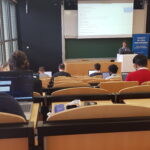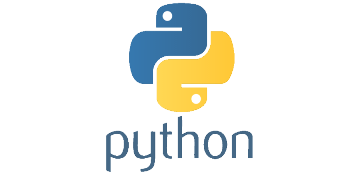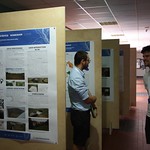Archives
Categories
Meta
Recent Posts
Connect to Us
Training in Python
8 video tutorials from the ODSE Workshop 2021 encompassing theory and practice on spatial and spatiotemporal data in Python.
Introduction to ODSE datasets in Python
by Leandro Parente (OpenGeoHub)
The first 30 minutes of this tutorial are dedicated to Software/libraries preparations and user support Software requirements: Python, Jupyter, QGIS, GRASS GIS, R. Following, the tutorial moves on to cover the introduction to spatial and spatiotemporal data in Python. Software requirements: opengeohub/py-geo docker image (gdal, rasterio, geopandas, eumap). The tutorial shows an introduction to JupytetLab and python libraries, introduction to spatiotemporal datasets, and explains the theoretical background for spatial and spatiotemporal machine learning. Then, the Eumap library (gapfilling and mapper modules ), and some Eumap spatiotemporal datasets examples (land cover 2000-2020 training dataset by Witjes et al, 2021) are covered.
Introduction to spatial and spatiotemporal data in Python
By Luka Antonić (MultiOne)
Software requirements: opengeohub/py-geo docker image (gdal, rasterio, geopandas, eumap) This tutorial explores the basics of spatial referencing, reading/writing raster datasets and vector datasets. It also shows how to access the datasets produced by the Geo-harmonizer with eumap, working with time-series datasets, and finally how to visualize the results.
Spatiotemporal machine learning in Python (2 parts)
By Leandro Parente and Chris van Diemen (OpenGeoHub)
Part 1
Software requirements: opengeohub/py-geo docker image (gdal, rasterio, eumap, scikit-learn)
This tutorial covers the theoretical background for machine learning and python implementations, as well as integrating raster data with scikit-learn models.
Why use pyeumap.LandMapper?
The tutorial shows how to prepare the training samples with spatial overlay, how to evaluate the ML model performance with spatial cross-validation, how to tune the ML model with hyperparameter optimization, how to get the final ML model ,and finally how to generate spatial predictions using the fitted model.
Part 2
Software requirements: opengeohub/py-geo docker image (gdal, rasterio, eumap, scikit-learn)
This tutorial covers the theoretical background for Ensemble ML and python implementations, exploring the general concepts and main advantages of spatiotemporal machine learning.
Why use LandMapper?
The tutorial also shows how to prepare the training sample via spacetime overlay, how to evaluate the EML model performance via spacetime cross-validation, how to tune the EML model via hyperparameter optimization, to finally fit the final EML model.
Using OGC Web Services in Python
by Leandro Parente & Chris van Diemen (OpenGeoHub))
This tutorial is an introduction to OGC Open Web Services (OWS), and to OWSLib Python API, CSW, WMS, WFS, (WCS currently we don’t provide), pyeumap API (Catalogue, WMS?).
This tutorial was prepared in collaboration with Tomáš Bouček.
Working with Cloud-Optimized GeoTIFFs in Python
By Leandro Parente (OpenGeoHub) & Luka Antonic (MultiOne)
Software requirements: opengeohub/py-geo docker image (gdal, rasterio, eumap)
Why Cloud Optimized GeoTIFF?
This tutorial shows how to generate COG files using GDAL, how to provide COG files through S3 protocol, how to access remote COG files in Python, and how to use the QGIS Eumap Plugin.
Introduction to Web Mapping Services
By Milan Kilibarda (University of Belgrade)
This tutorial explores the typical architecture of web map applications, and it introduces OGC services (WMS, WFS, WCS). It also explores the evolution of web mapping servers and clients, and shows how to access the OpenDataScience Europe services, as well as a web mapping application demonstration.
High performance computing in Python
High performance computing in Python
Working with harmonized LUCAS dataset
by Lukáš Brodský (Charles University in Prague), Martin Landa (CTU), Tomáš Bouček (Charles University in Prague)
Software requirements: opengeohub/py-geo docker image (gdal, rasterio, eumap, scikit-learn), QGIS
This tutorial is an introduction to the LUCAS dataset provided by Eurostat, and covers the harmonized LUCAS dataset. The session explores how to access LUCAS dataset using Python API (Jupyter notebooks), and how to access LUCAS dataset from QGIS. It also explains how to validate Land product validation with LUCAS points (use case).








